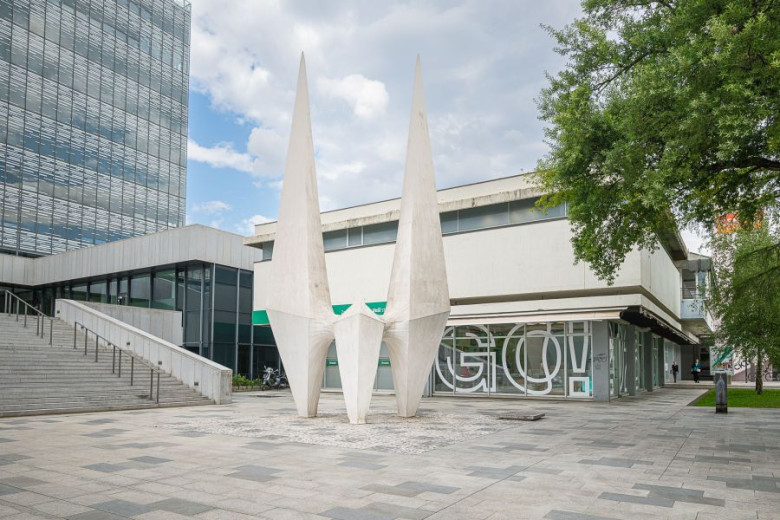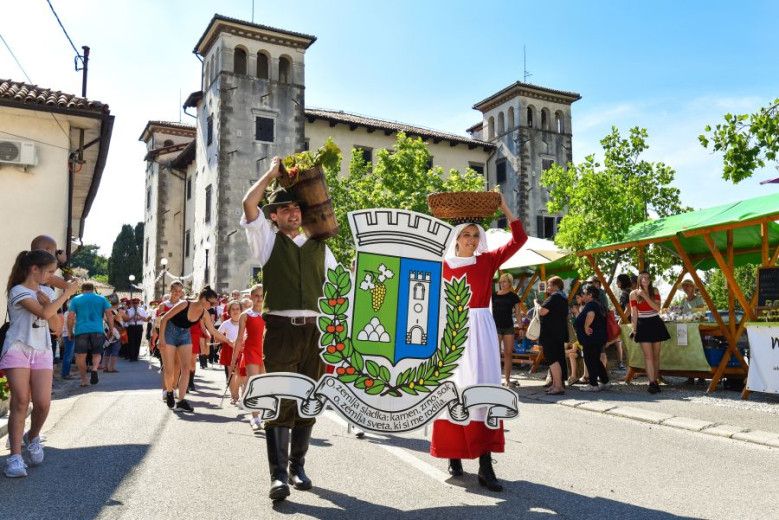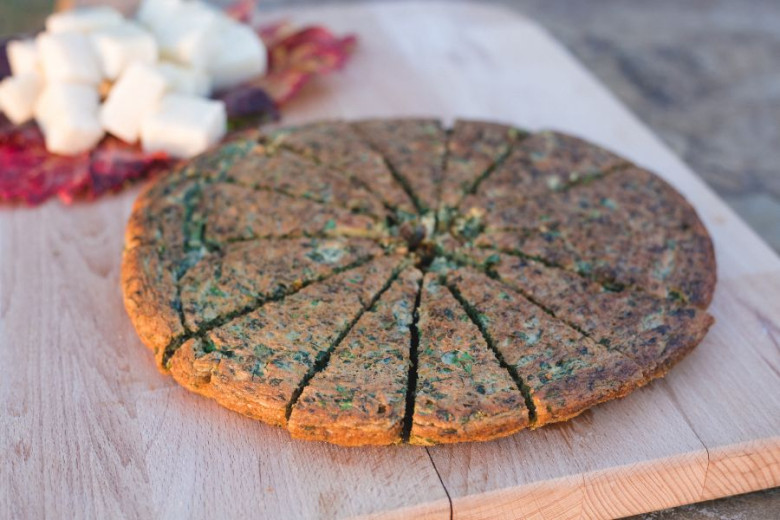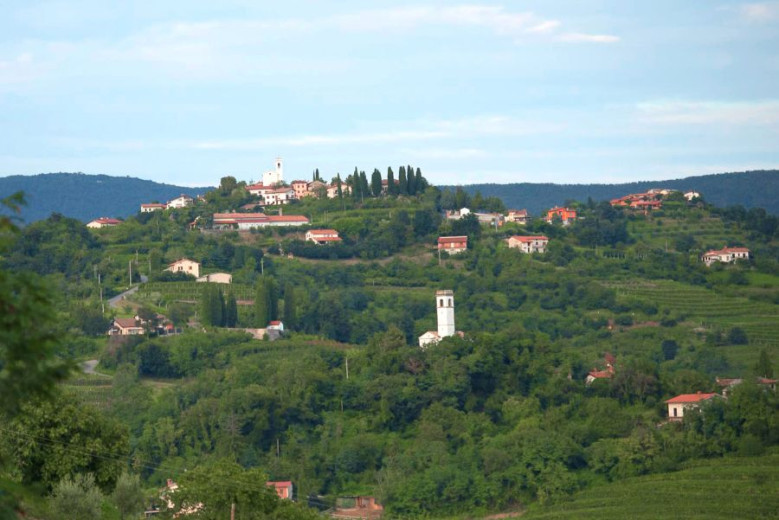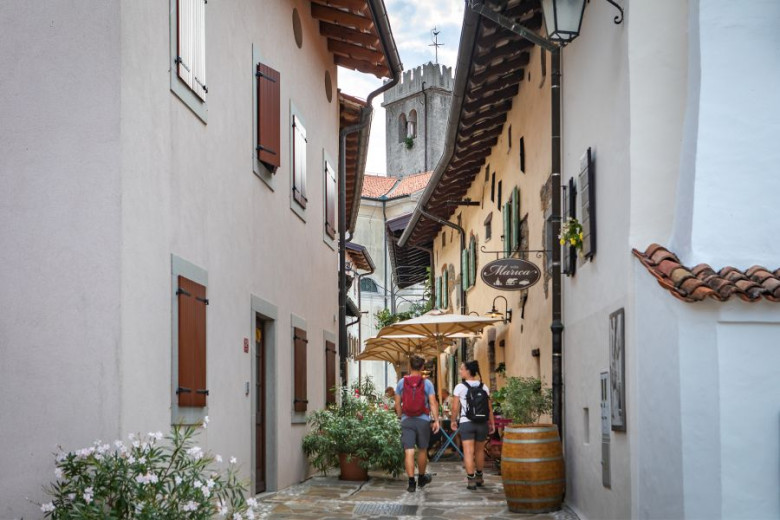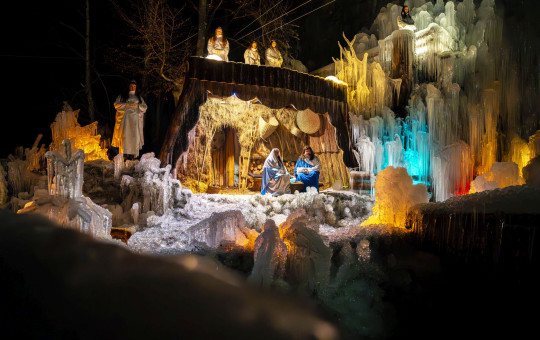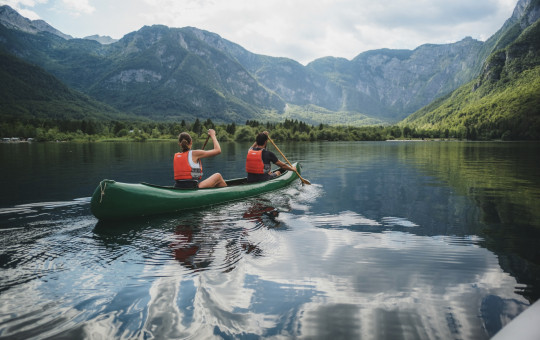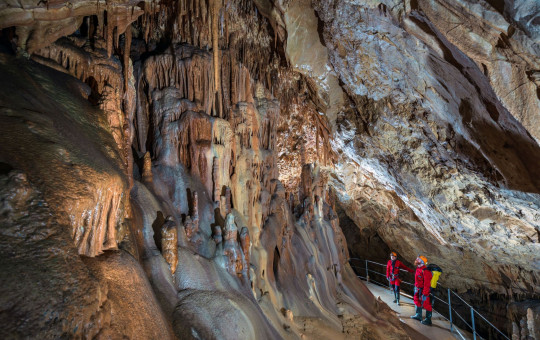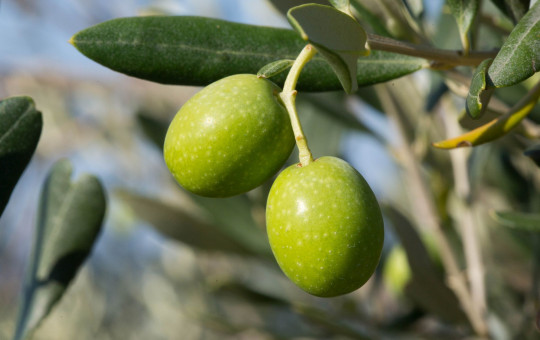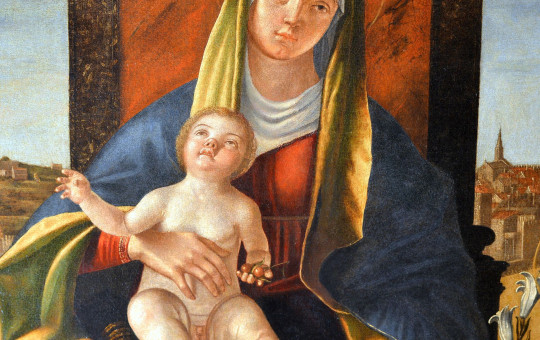Date: 15. January 2025
Time to read: 2 min
The Goriška region lies in the west of Slovenia, along the Italian border. The Julian Alps, the Soča River and the fertile Vipava Valley are the region's most distinctive natural features. At its heart are the twin cities of Nova Gorica and Gorizia, deeply intertwined in history, culture and economy, though now divided by the Slovenian-Italian border.
In addition to its urban centres, the region is renowned for its stunning natural beauty, meandering rivers, rolling vineyards and the warmth and hospitality of its people.
Cities of friendship and culture
Nova Gorica, also known as the City of Roses, is a modern city built after World War II in response to the loss of Gorizia to Italy. Today, the two cities are reunited through cross-border projects and cooperation, a bond beautifully symbolised by their shared title of European Capital of Culture 2025. The spirit of unity is palpable in Europe Square, a space that seamlessly links the two cities and their people.
On the Italian side, Gorizia captivates visitors with its historic architecture, charming squares and vibrant urban life. One of its highlights is the medieval castle, perched on a hill and offering stunning panoramic views of both cities and the picturesque surrounding countryside.
The Italian city of Gorizia is rich in cultural and historical attractions closely linked to the Slovenian community. Piazza Vittoria, the city's central square, has long been an important meeting place for Slovenians. Nearby landmarks connected to the Slovenian community include the Duomo of Gorizia, which preserves historical documents and works of art that reflect the deep Slovenian cultural roots of the area, and the cemetery of Sant'Andrea, the final resting place of many important Slovenians, including the esteemed poet and writer Simon Gregorčič, who lived and worked in the area.
The urban ensemble of Nova Gorica and Gorizia, divided by a state border, is a unique phenomenon. They are not two separate cities, but essentially one city spanning two nations. This area reflects a rich tapestry of influences from the Habsburg Monarchy, the Kingdom of Italy, the Republic of Venice, and the Slavic world.
The master plan for Nova Gorica, designed by the architect Edvard Ravnikar, is rooted in a grid system of streets and open spaces, fostering a sense of openness, transparency and greenery. Ravnikar, a student of the renowned Le Corbusier, incorporated modernist principles into the city's design, while thoughtfully adapting them to local cultural and practical needs.
Although architect Jože Plečnik, who significantly shaped the architectural character of Ljubljana, did not directly design Nova Gorica, his influence is evident in the urban planning of the city and its surroundings. Built after World War II in response to the loss of the Gorizia area to Italy, Nova Gorica was conceived as a modern city reflecting contemporary European architectural trends. Plečnik's architectural philosophy, which emphasises the harmony between nature, religion and humanity, is reflected in the design of Nova Gorica. The city prioritises open public spaces and lush greenery, embodying his urban ideals with seamless integration.
An emerald beauty
The Soča River, one of Europe's most beautiful rivers, is the heart of the Goriška region. Its distinctive emerald colour and crystal-clear waters captivate both nature enthusiasts and adrenaline seekers alike. This stretch of the river offers a wide range of activities ranging from peaceful fishing and riverside walks to thrilling sports such as rafting, kayaking and canyoning. The famous Soča Trail follows the river, guiding visitors through pristine nature and remnants of World War I history.
As Simon Gregorčič wrote in his poem "To the River Soča":
You are splendid, limpid daughter of the heights,
You are graceful in your natural beauty,
When your transparent depths,
Are not disturbed by the wrath of darksome storms,
You are splendid, limpid daughter of the heights!
-
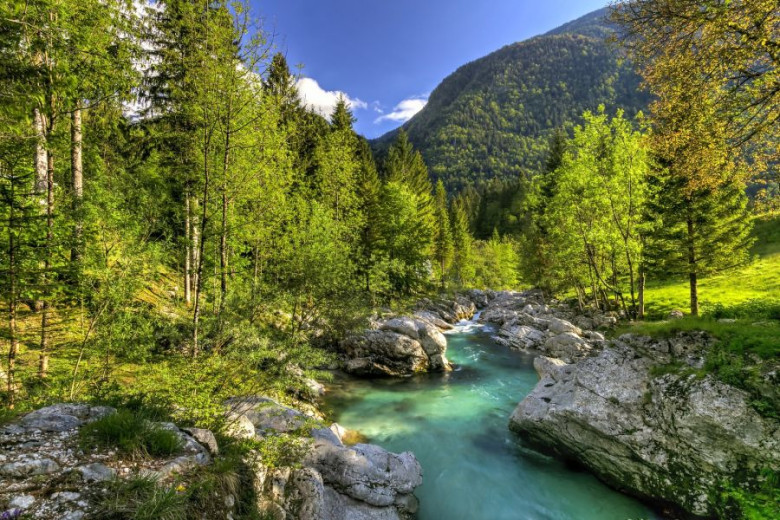 The Soča River, one of Europe's most beautiful rivers, originates below Jalovec in Trenta and flows into the Adriatic Sea. Photo: Alen Kosmač/www.slovenia.info
The Soča River, one of Europe's most beautiful rivers, originates below Jalovec in Trenta and flows into the Adriatic Sea. Photo: Alen Kosmač/www.slovenia.info
-
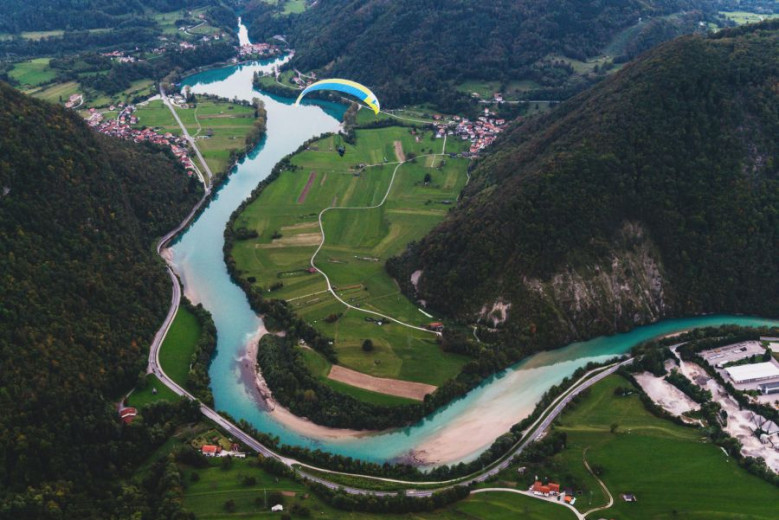 A distinctive emerald green colour is due to its limestone riverbed and the pristine, mineral-rich water that shimmers brilliantly in the sunlight. Photo: Ciril Jazbec/www.slovenia.info
A distinctive emerald green colour is due to its limestone riverbed and the pristine, mineral-rich water that shimmers brilliantly in the sunlight. Photo: Ciril Jazbec/www.slovenia.info
A paradise for food and wine lovers
Often referred to as the Tuscany of Slovenia, the Brda Hills are a stunning wine region of rolling hills, lush vineyards, olive groves, and charming villages. The region's vineyards produce world-class wines such as Rebula, Merlot and Sauvignon. Renowned for their expertise, dedication and innovative techniques, Brda's winemakers have placed the region firmly on the global wine map.
In addition to its exceptional wines, Brda is celebrated for its authentic cuisine. Visitors can indulge in homemade meats, cheeses, olive oils and traditional desserts such as briška gibanica (a layered strudel-like cake). A leisurely stroll through the medieval village of Šmartno is both a visual delight and a soul-nourishing experience.
The Adriatic Sea, only 20 kilometres away, has a strong influence on Brda's climate. The cherry tree holds a special place in the region, symbolising the first harvest of the year. Brda cherries were once renowned in Vienna and sold by local women across Carniola, Carinthia, Styria and Salzburg. Summers bring the ripening of peaches, while the region's plums are equally celebrated.
Brda is rich in cultural landmarks, including the Gonjače lookout tower, the Renaissance Dobrovo Castle, the Church of Saint Cross, a hunting mansion of the Gorizia Counts, and the Mediterranean village of Šmartno. The beauty of the Brda hills has inspired countless artists over the years.
Nature and heritage of the Goriška region
The Goriška region is a treasure trove of natural beauty and cultural heritage. Hikers can explore Sabotin, a hill above Nova Gorica that witnessed fierce battles during World War I. Today, Sabotin is a popular destination for nature and history lovers, and is home to the Peace Park, which, with its museums and cave remains, serves as a poignant reminder of the area's turbulent past.
Although Triglav National Park lies in the neighbouring region, its influence stretches into Goriška, particularly through the Soča Valley. This area is a paradise for cycling enthusiasts, with numerous cycling routes of varying levels of difficulty.
A treasure waiting to be discovered
The Goriška region is a hidden gem that seamlessly blends natural beauty, rich history, excellent cuisine and warm-hearted people. With Nova Gorica and Gorizia as symbols of cross-border cooperation, the emerald green Soča River, the picturesque Brda wine region and many other captivating attractions, this area offers an unforgettable experience to all who visit.
Whether it's exploring historic towns, enjoying outdoor sports or savouring a glass of fine wine, Goriška has something for everyone. It is truly a treasure waiting to be discovered.

